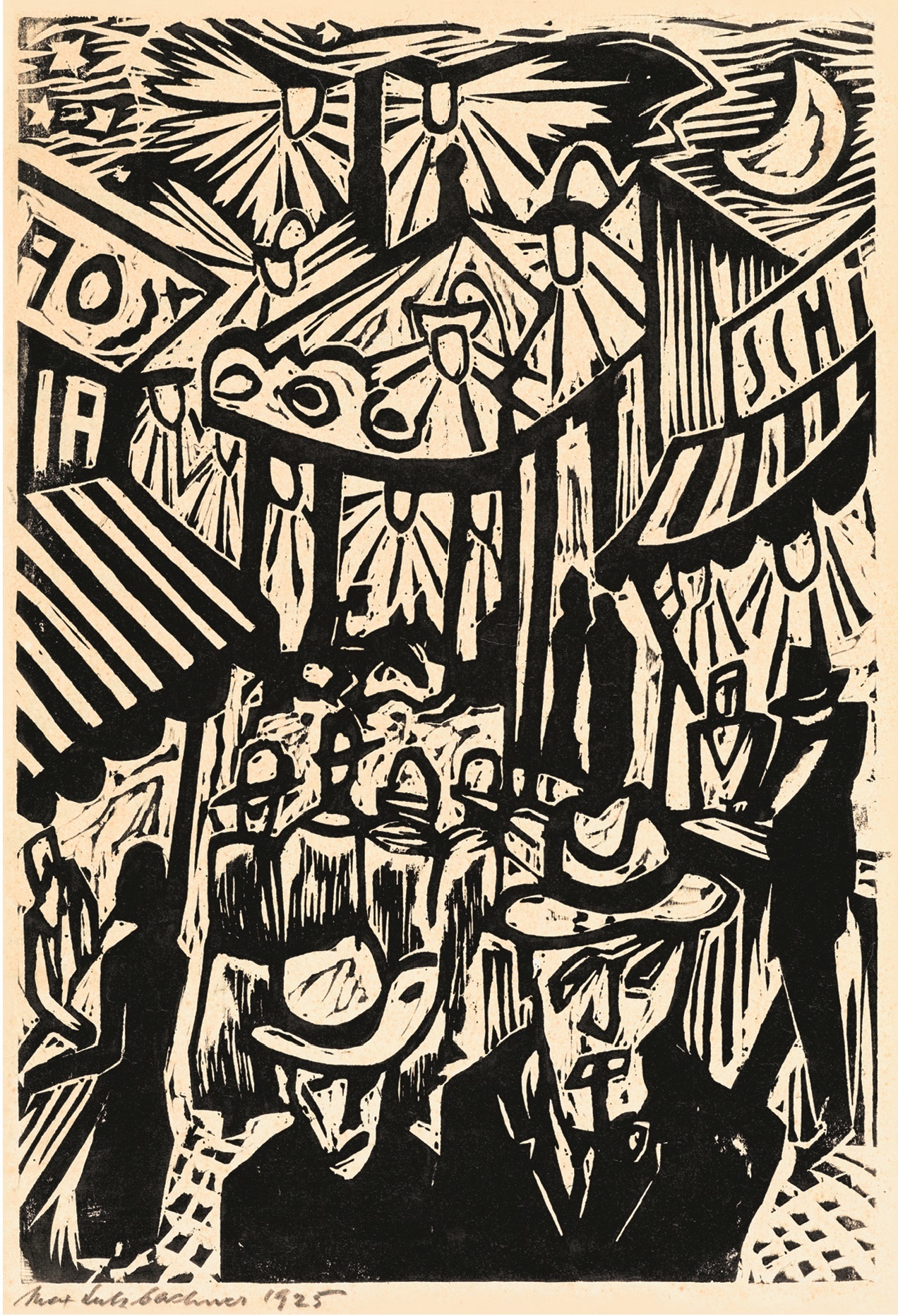Max Sulzbachner
Hustle and Bustle in Basel
The Kunstmuseum Basel honors the Basel artist Max Sulzbachner (1904–1985) with a focused retrospective of his eclectic oeuvre and a publication. Despite Sulzbachner’s renown and abiding popularity, his work has never been the subject of a comprehensive study. The exhibition and the accompanying catalogue will close this gap in the historiography of art in Basel.
Moonlit Nights is the title of a series of woodcuts the artist created in 1925. The haunting prints are characteristic examples of Sulzbachner’s early work, which shows the influence of the members of Rot-Blau, a group of artists working in Basel. Like Hermann Scherer and Albert Müller, Sulzbachner was an enthusiastic admirer of Ernst Ludwig Kirchner’s Expressionism. A lifelong resident of Basel, he was interested in all forms of theatricality and popular entertainment. He found some of his favorite subjects early on: the pristine landscapes of the Mendrisiotto as well as fairgrounds, circus stages, and other scenes of thrilling and/ or bizarre goings-on.
Sulzbachner subsequently also distinguished himself as a set designer whose work defined the visual style of Swiss theater in the interwar and postwar periods, as is illustrated by his numerous sketches for stage decorations; selected examples will be on view in the exhibition together with several of his well-known “Swiss folk custom figurines,” which are now in the Museum der Kulturen in Basel.
A fervent Fasnacht celebrant, “Sulzbi” not only painted lanterns, he also wrote and illustrated provocative “Schnitzelbank” ballads and designed carnival costumes. His commitment to his native city’s vernacular artistic tradition earned Sulzbachner the enduring affection of many in Basel. Allusions to local events and political issues as well as the penchant for stylistic exaggeration, for caricature and satire, are characteristic of Sulzbachner’s entire output. Offering visitors an opportunity to discover the artist’s multifaceted oeuvre, the retrospective also sheds new light on art in Basel and the city’s cultural scene from the years after World War I until the 1960s.
The exhibition is supported by:
- Stiftung für das Kunstmuseum Basel

